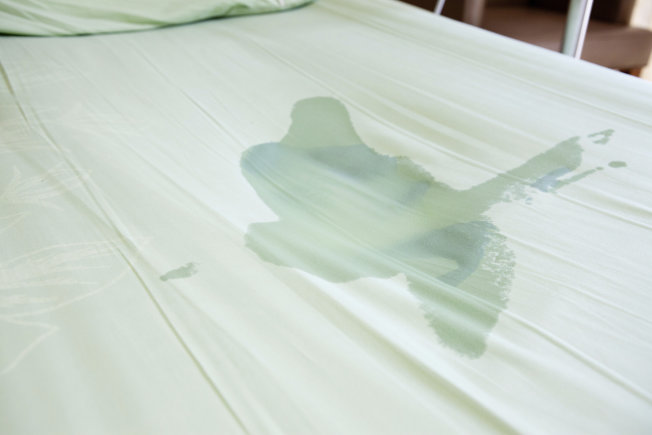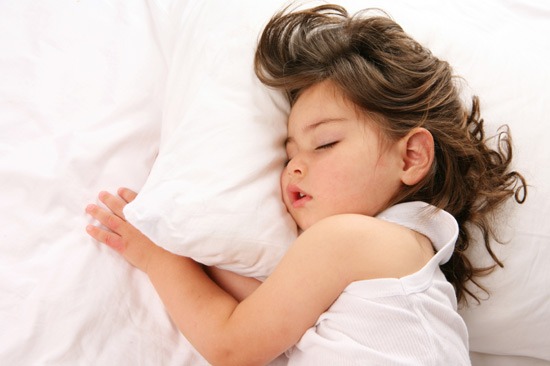Help! My Kid Wets the Bed

Samantha Costa, U.S. News and World Report
You’ve read all the books, successfully potty trained your toddler and assumed the bed-wetting would end by kindergarten, or even first or second grade. But when the dry nights are few and far between by age 7 or older, and the soggy, old mattress has seen its day, what’s a parent to do?
Dr. Sandra G. Hassink, a pediatrician at Nemours Alfred I. duPont Hospital for Children in Wilmington, Delaware, and president of the American Academy of Pediatrics, says it’s important to know that bed-wetting isn’t a behavioral problem, nor should it lead to a blame game between parents and children.
“It’s always important, as soon as the concern arises, to talk to the pediatrician to either be reassured or investigate it,” Hassink explains. “It’s worse to sit on it and either worry about it or pressure your child without getting good advice about how to deal with the bed-wetting.”
It’s More Common Than You Think
Primary nocturnal enuresis – or nighttime bed-wetting – is only diagnosed in children who haven’t been dry on consecutive nights for longer than six months, according to a paper in Pediatrics in Review, a publication of the American Academy of Pediatrics.
It’s separated into two groups: primary bed-wetting, which refers to children who have never had a consistently dry night, and secondary bed-wetting, which occurs in children who were dry for at least six months before they began wetting the bed.
Roughly 5 million children and adolescents are dealing with the nightly nuisance, explains Dr. Howard Bennett, a private practice pediatrician at Chevy Chase Pediatrics and clinical professor of pediatrics at the George Washington University School of Medicine in the District of Columbia. “Kids who wet the bed tend to think they’re the only ones who do it because it’s something children are frequently embarrassed about, even though it’s no one’s fault,” says Bennett, author of “Waking Up Dry: A Guide to Help Children Overcome Bedwetting.”
For perspective, Bennett tells his pediatric patients who are age 6 and older to consider the average baseball stadium, which holds 50,000 fans. “You’d need 100 stadiums full of kids. That’s how many kids wet the bed,” he tells the children. “That has a bigger impact on a 6- or 7-year-old.”
Approximately 10 to 15 percent of 7-year-olds still struggle with wetting the bed. After that, the likelihood that bed-wetting will continue falls 15 percent per year. That means 99 percent of children are dry by age 15, Bennet says.
Even after bed-wetting is resolved, up to 20 percent of adults who were primary bed-wetters as children experience bed-wetting again in their teens or even adult years, says Dr. Joseph Barone, a pediatric urologist at Rutgers University’s Robert Wood Johnson Medical School and surgeon-in-chief at the Bristol-Myers Squibb Children’s Hospital at Robert Wood Johnson University Hospital.
Why Does My Kid Do It?
Experts aren’t sure what causes bed-wetting, Bennett says.
“Most of the time, bed-wetting is just the delay in the developmental acquisition of nighttime bladder control,” he says, adding that it’s not clear why some children take longer to maintain dry nights.
Barone, author of “It’s Not Your Fault!: Strategies for Solving Toilet Training and Bedwetting Problems,” explains that risk factors for bed-wetting are hereditary: “If one parent wet the bed, the probability the child will be a bed-wetter is 40 percent. If both parents were bed-wetters, the probability goes up to 80 percent.”
The most overlooked factor that could cause bed-wetting is constipation, according to Barone and Bennett. “Constipation is a very big problem in kids,” Bennett says. “It’s not serious, but it’s very common and causes stomachaches and problems in the urinary tract.”
The rectum is located behind the bladder, “so if the rectum is full, it can push on the bladder and lead to something urologists call uncontrolled bladder contractions,” he says, which can promote daytime wetting or contractions at night – or bed-wetting.
The size of the child’s bladder could also contribute to the problem, Bennett says. If it’s smaller than average, the child may urinate more frequently during the day and have less room to hold urine overnight. In other kids, the brain produces a hormone at night that reduces the amount of urine the kidneys make, causing more urine to be produced overnight. What’s more, some children have difficulty waking at night even if they experience the urge to go, causing a delay in the brain’s communication to the body to get up and go to the toilet.
If a child suffers from primary bed-wetting, he or she likely doesn’t have an underlying condition, Bennett says. However, children who struggle with both daytime and nighttime incontinence should be screened for urinary tract infections, diabetes, sickle cell disease, sleep apnea and neurological disorders.
One of the biggest myths about primary bed-wetting is that it’s triggered by psychological problems. While some kids may start wetting the bed following an emotional incident – such as their parents’ divorce, out-of-state relocation or another trauma – such behavior is an example of secondary bed-wetting, Barone says. Typically, new bed-wetting brought on by stress resolves itself once the emotional event has passed.
What Can I Do for My Child?
Most children outgrow bed-wetting on their own, but the longer it continues, the heavier the emotional and social burden for both parents and children. First, never punish your child. “It’s nobody’s fault. Nobody wets the bed on purpose,” Bennett says.
Although it’s involuntary and often difficult to manage, consider these treatments to reduce your child’s bed-wetting or help him or her cope with the uncertainty of waking up wet or dry:
Limit fluids at bedtime. Some doctors recommend restricting fluids after dinner to help kids stay dry. This doesn’t always work for younger children, Bennett says, adding that some kids may view the liquid ban as punishment. Talk to your doctor to figure out the best option for you and your child.
Consider motivational tools. “If the child is under the age of 5 and wetting the bed, there are certain books the parents can read to [them] that use imagery to help them stay dry at night, like ‘Dry All Night’ by Alison Mack,” Barone says. Picture books filled with imagery may help children visualize parts of the story, thereby leading to greater comprehension.
Another idea is to take advantage of sticker calendars. When your kid has a dry night, he or she can tack a favorite sticker on the calendar to celebrate the accomplishment.
Try pull-up underpants. If your child is age 8 or younger, Bennett recommends using these slim, absorbent disposable undergarments, which you might recall from the potty training years. The protective underpants, which are often labeled as GoodNites in retail stores, keep the bed and pajamas dry – which is a plus for families with more than one child and an endless pile of laundry. Stop using them after age 8, though, Bennett says. At that point, it might be better to consider purchasing an alarm system to help the body learn to wake up when it’s time to go to the toilet.
Use alarms. Bed-wetting alarms are available online for purchase. These detect small amounts of moisture and make a sound or vibrate when the child begins to wet the bed. Some have a sensor attached to the underwear, while others are connected to a bed mat. The alarm wakes the child up, so he or she can finish in the bathroom, Bennett says. After a few weeks of hearing the alarm, the child’s brain begins to pay attention to the natural clues that it’s time to wake up and go before wetting the bed.
Examine medication as an option. There’s only one drug, desmopressin, approved for use in children age 6 and older. It increases hormone levels that force the body to make less urine at night. However, most pediatricians recommend alarms over medication, or only recommend medication as a short-term solution for sleepovers – which can be particularly tricky for bed wetters. That’s because the medication doesn’t cure the issue, and once it’s discontinued, bed-wetting will continue, Bennett says.
Don’t promote sleepover anxiety. “Sometimes it’s just a matter of a parent-parent conference to let the other adult know the child is going to be coming over with a separate change of clothes or Pull-Ups,” he says.
Bennett adds that it can be as simple as having your child bring a sleeping bag with a Pull-Up tucked away at the bottom that he or she can “shimmy” into or put on under pajamas while in the bathroom. “Some kids just tell people, ‘I wet the bed … no big deal,’ but most kids like to keep it private,” Bennett says.
Before the night of the sleepover, do a “dry run” at home or another family member’s house. It’s an opportunity for kids to practice how they’ll keep their secret, and more importantly, stay dry at a sleepover.












